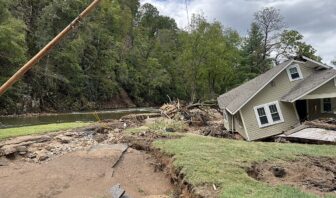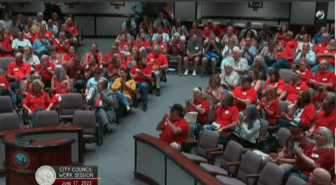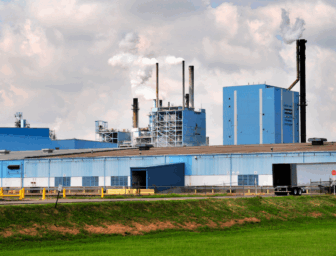Independent study provides lawmakers and the public with first Maryland-specific risk assessment, coming on the heels of violent gas well explosion in PA
Advocates call on the General Assembly to pass SB 745 to ensure that communities get the facts and legislators have a say in state drilling decision
ANNAPOLIS—In the wake of a gas well explosion and fire in nearby Pennsylvania that injured one worker and left another still missing, Maryland community and environmental groups released a study today showing that allowing controversial hydraulic fracturing or “fracking” for gas in the Free State would expose communities’ air, water and land to high levels of risk.
The study, conducted by experts at one of the world’s leading independent environmental consultancies, used Maryland-specific data to examine ten major drilling impact areas—including water use, water contamination, air pollution, traffic, noise, biodiversity, land use and visual scarring—across every stage of the drilling process. In nine of ten categories, Maryland received a “high” or “very high” cumulative risk grade, with earthquake risks receiving the only “low” classification. (View the full study here. Download a summary of key findings and methodology here.)
“Western Marylanders face the real threat that high risks projected on paper today could turn into a real poisoned well, sick child, or lost tourism business tomorrow,” said Paul Roberts, co-founder of the Western Maryland community group Citizen Shale and a member of Governor O’Malley’s fracking advisory commission. “These findings only underscore the need for General Assembly action this year. As state agencies rush to complete their own risk studies by August 2014, we lack any guarantee that drilling permits won’t be issued shortly thereafter, regardless of the results or the will of the public.”
Under Governor O’Malley’s 2011 executive order on fracking, state agencies face a deadline of August 2014 to complete a series of studies aimed at determining whether fracking in Maryland would pose “unacceptable risks” to public health and the environment. However, due to resource and time constraints, those studies remain behind schedule or, in some cases, have yet to commence. Citizen Shale and the Chesapeake Climate Action Network jointly commissioned the independent risk assessment from UK-based Ricardo-AEA so that legislators would be armed with preliminary risk findings as they weigh legislative options this year.
“The high levels of risk found in this study should set off alarm bells across the halls of the General Assembly,” said State Senator Ron Young (D-Frederick). “We need thorough and complete information about the many risks of fracking before any state decision is made on whether it should happen here. That’s why I’ve introduced the Shale Gas Drilling Safety Review Act—to ensure our communities get the answers they deserve and to ensure the General Assembly has a say in the ultimate decision.”
The Shale Gas Drilling Safety Review Act (SB745/HB1122) introduced by Sen. Young and Delegate Heather Mizeur (D-Montgomery), would temporarily prevent state agencies from issuing fracking permits in Maryland until common-sense criteria are met, including the completion of a human and environmental risk assessment and an 18-month review period, which would give the General Assembly and the public time to act upon the findings.
“From where I sit on the commission, it’s clear that, in the 11th hour, state agencies are already far behind schedule,” said Dr. Ann Bristow a board member of the Savage River Water Association and a recently appointed member of the Governor’s fracking advisory commission. “They are rushing with too few resources and too little time to complete the necessary risk assessments with the vigor we deserve.”
“With such high risks staring our communities in the face, the General Assembly simply can’t justify sitting on the sidelines any longer,” said Mike Tidwell, director of the Chesapeake Climate Action Network. “Tragedies like the recent Chevron gas well explosion in Pennsylvania are all too common. Meanwhile, the proposed Cove Point gas export facility would dramatically increase pressure to bring fracking and the associated risks not only to Western Maryland, but to communities lying atop the four other gas basins spanning our state. This session is the General Assembly’s final chance to afford us commonsense protections.”
To arrive at the risk rankings, Ricardo-AEA considered the potential significance and likelihood of environmental impacts occurring, based on a literature review of over 200 documents and the evaluation of Maryland-specific geological, environmental and regulatory data gathered with the assistance of Maryland state and local government officials. The firm previously led the European Commission’s continent-wide hydraulic fracturing risk assessment and regulatory review.
A summary of the risk assessment findings and methodology is available at: http://www.chesapeakeclimate.org/file-uploads/kelly-trout/Summary-Maryland-Fracking-Risk-Assessment-Feb2014.pdf
Click here to download a copy of the full Shale Gas Risk Assessment for Maryland: http://www.chesapeakeclimate.org/file-uploads/kelly-trout/Shale-gas-risk-assessment-for-Maryland_Feb2014.pdf
Click here for a summary of the Shale Gas Drilling Safety Review Act: http://www.chesapeakeclimate.org/file-uploads/kelly-trout/CCE-Fracking-Legislation-Factsheet-2014.pdf




